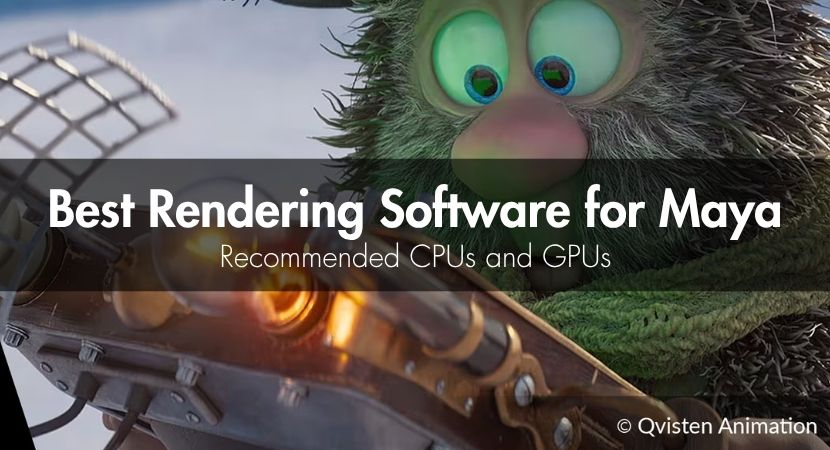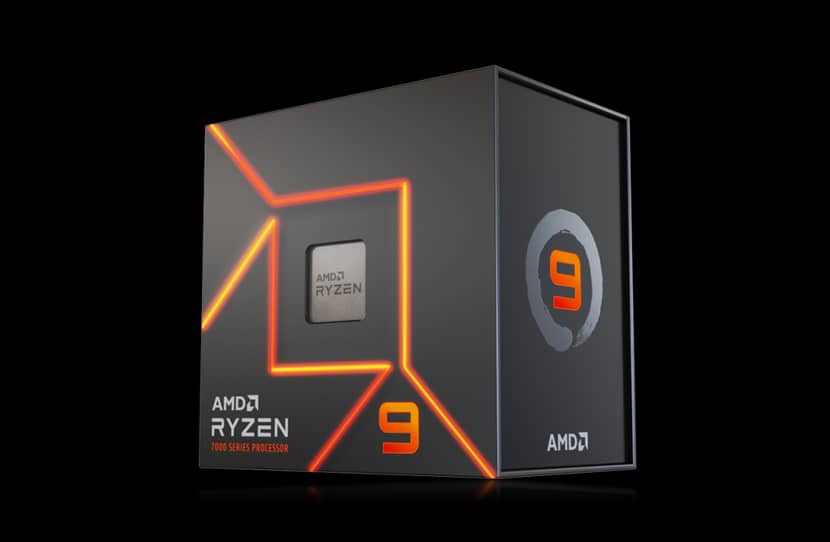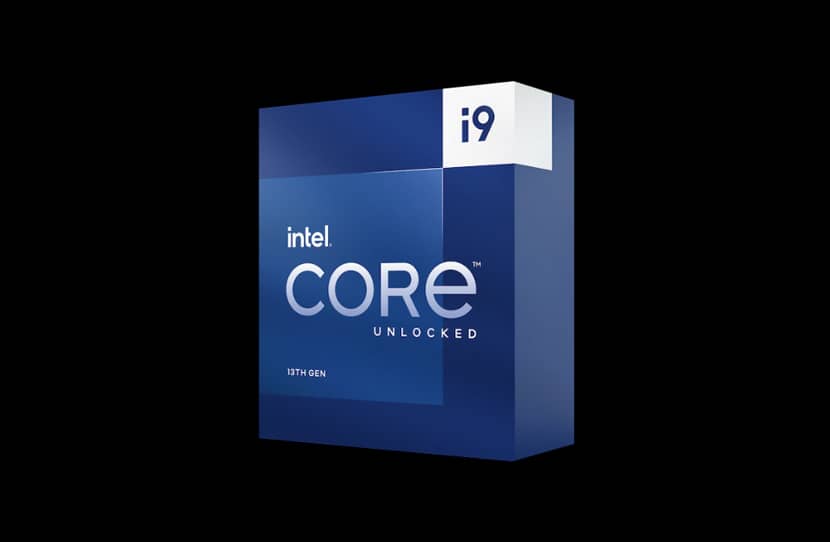
Although Autodesk Maya is one of the most powerful tools for 3D design, animation, and visual effects, its performance and efficiency rely heavily on the hardware you choose and the rendering engine you integrate into your workflow. Maya is trusted by thousands of professionals worldwide for everything from architectural visualization to AAA game productions to Hollywood blockbusters. Take a moment with this guide to refine your understanding of Maya rendering, or even learn something brand new along the way!
Selecting the ideal CPU, GPU, and renderer for Maya might mean the difference between a creative process that runs smoothly and one that encounters annoying bottlenecks. We'll examine how various hardware elements impact Maya's performance in this guide, evaluate the top CPUs and GPUs on the market right now, and highlight the most dependable rendering software for Maya users. This thorough analysis will assist you in optimizing your setup for speed, quality, and scalability, regardless of your status as a student, freelancer, or studio professional.
Understanding Autodesk Maya And Rendering Needs.
A popular 3D computer graphics program for modeling, animation, simulation, and rendering is Autodesk Maya. Its skills span a variety of industries, including accurate architectural visualization, real-time assets for gaming, and visual effects in popular movies.
The last stage of turning your 3D work into excellent images in Maya is rendering. However, this procedure puts a tremendous amount of strain on hardware. While a high GPU speeds up viewport performance and GPU-based rendering engines, a powerful CPU guarantees fluid simulation and single-thread workloads. Making the right choice is crucial since even easy projects may become tedious and slow without the proper setup.
In the video below from the official Maya Learning Channel, you can watch the first introductory episode of the ten-part series on Maya. Visit YouTube to explore the remaining nine episodes!
How Does the CPU Impact Maya’s Rendering Performance?
Particularly for tasks like modeling, rigging, and physics simulations, Maya significantly depends on CPU performance. A CPU's single-core speed is essential because Maya does not fully parallelize many of its components. This implies that in daily use, a CPU with fewer cores and a faster clock speed can frequently beat one with dozens of cores.
However, multi-core performance becomes crucial when it comes to CPU-based rendering, particularly when utilizing Arnold, Maya's default renderer. Your processor may finish complex renderings more quickly if it has more cores.
Both AMD and Intel 64-bit processors are compatible with Maya, and Apple's latest M-series chips are designed to manage demanding rendering tasks. Because of its broad compatibility, you can select a CPU that runs well on any platform.
What Are The Recommended CPUs For Maya?
Some of the best CPUs for experts utilizing Maya are as follows:
- The Intel Core i9 series (13th and 14th generation) processors are known for their exceptional single-core performance and ample multi-core rendering capabilities.

- AMD Ryzen 9 (7000) series processors Ryzen CPUs are well-known for their affordability and efficiency, and they offer excellent overall performance.

- Designed for demanding workloads, AMD Threadripper PRO is perfect for studios managing large-scale projects and CPU rendering pipelines.
In reality, modeling and simulation will be impacted by single-core speed, whereas final rendering activities are dominated by multi-core counts. Because they offer the finest price-performance ratio, many artists choose CPUs like the AMD Ryzen 9 7950X or Intel i9-13900K.
If you’d rather skip investing in expensive, high-end hardware, check out our render farm, which gives you access to the most powerful machines, with 3D software, renderers, and plugins preinstalled, so you can leverage that power whenever you need it, without spending a fortune and investing time in setup and maintenance.
Is Intel Xeon A Good Choice For Maya?
Intel Xeon processors are workstation-class CPUs that are reliable and have multi-threaded performance. Xeons are often more costly and have slower clock speeds than the more popular AMD Ryzen or Intel Core CPUs, despite their power.
Most Maya users do not require Xeons unless they are working in a studio environment that requires error-correcting memory (ECC) and long-term stability under severe multi-user workloads. AMD Ryzen or Intel i9 CPUs usually provide better cost-to-performance ratios for freelancers, students, and small studios.
In this video, Techfluencer compares two major contenders in the CPU market: the AMD Ryzen 9 9900X and the Intel Core i9 14900K. Both processors target high-end users such as gamers and content creators, promising exceptional performance. The comparison highlights their strengths in capability, speed, and overall value, helping to determine which CPU stands out as the better choice in the premium segment.
How Does The GPU Affect Maya’s Rendering Performance?
The GPU is essential for viewport interactivity and GPU-based rendering, even though the CPU handles the majority of Maya's fundamental functions. Smoother modeling, animation, and real-time playback are made possible by a powerful GPU, which significantly increases frame rates in the viewport.
More significantly, modern renderers for Maya like Octane, Redshift, and Arnold GPU are powered by GPUs. These engines greatly speed up render times by utilizing CUDA cores and VRAM capacity. Your GPU can handle larger, more intricate scenes with plenty of textures and geometry better if you have more VRAM.
The essential distinctions between CPUs and GPUs are explained simply in this video by TechPrep. It discusses how GPUs are crucial for rendering, artificial intelligence, and scientific computations since they excel at parallel processing with high throughput, whereas CPUs manage sequential workloads with low latency. You'll see why these elements perform well together in contemporary rendering and computing procedures as you watch.
For a deeper dive into GPU rendering, be sure to check out our article ‘GPU Rendering: Everything You Need To Know. Setup, Benefits, And Tips’ for a comprehensive guide.
What Are The Best GPUs For Maya?
Because of its extensive support across render engines and CUDA acceleration, NVIDIA continues to be the industry standard when it comes to Maya GPU selection. Top choices include of:
- NVIDIA RTX 4090 – Currently the fastest GPU for rendering, with unmatched CUDA core counts and VRAM capacity.
- NVIDIA RTX A6000 – A professional-grade card built for studios with huge datasets and enterprise support needs.
- AMD Radeon Pro W6800 – A strong alternative for professionals preferring AMD’s ecosystem.
- Intel Arc GPUs – A newer option, less established but improving steadily for budget-conscious users.
The two videos below from Mediaman Studio Services may have been published four years ago, but they still provide highly valuable insights. Despite their age, the information remains relevant today and helps clarify which choices lead to better performance.
Does Maya Support Multi-GPU Rendering With Arnold?
While Arnold GPU supports up to eight GPUs for rendering, Maya itself does not fully utilize multiple GPUs for viewport speed. For artists working with very big projects or those needing high-speed production rendering, this makes multi-GPU configurations feasible.
However, the render engine affects scaling efficiency. Some customers experience diminishing returns after two or three GPUs, even though Redshift and Octane scale well across several GPUs. It's critical to strike a balance between project requirements and hardware investment.
What Are the Best Renderers for Autodesk Maya?
Arnold is the renderer that comes with Maya by default. Arnold is well known for its physically based rendering, which results in incredibly realistic pictures. But because it is conventionally CPU-based, rendering may be sluggish unless you utilize an Arnold GPU. When choosing the best renderer for Maya, consider your specific needs.
Third-party engines are used by many artists for speed and flexibility:
- Redshift – A GPU renderer known for speed, flexibility, and production-proven performance.
- OctaneRender – Delivers exceptional photorealism with fast GPU performance, though it requires powerful hardware.
- V-Ray – Offers both CPU and GPU rendering, widely used in architecture and VFX for its flexibility.
- RenderMan – Pixar’s renderer, highly advanced and ideal for studios focusing on complex VFX and animation.
Each GPU renderer for Maya offers unique advantages. The fastest renderer for Maya varies depending on your hardware setup - Redshift typically excels in speed on NVIDIA cards, while the best GPU renderer for Maya for photorealism might be OctaneRender.
Here is also a nice comparison by MographPlus between some of them:
When selecting a GPU renderer for Maya, benchmark tests show that Redshift often delivers the fastest render times for Maya projects, though results vary based on scene complexity.
How To Choose Maya Hardware Based On Your Budget?
Your project's scope and budget will determine which CPU, GPU, and renderer you choose. While studios investing in huge productions profit from Threadripper CPUs or RTX A6000 GPUs, students and amateurs may prefer more affordable CPUs like AMD Ryzen 7 or GPUs like RTX 4070.
A powerful mid-range CPU combined with a top-tier GPU, such as the RTX 4090, is frequently the best option for balanced performance. This configuration greatly reduces render times while guaranteeing fluid viewport interaction.
What Is Cloud Rendering For Maya?
You can assign rendering jobs to distant servers with strong CPUs and GPUs by using cloud rendering. This is particularly helpful for initiatives with tight deadlines and insufficient local resources.
Render farms like RebusFarm deliver scalable performance at cheap rates, providing you access to thousands of CPU and GPU cores without the need to acquire expensive gear. Because of this, cloud rendering is a sensible option for studios, students, and independent contractors alike.
CPU Vs GPU Rendering – Which Is Better For Maya?
Depending on your workflow, you can choose between CPU and GPU rendering:
- In conventional operations, CPU rendering performs exceptionally well, handling large datasets and delivering incredibly precise results. When precision is a must in high-end projects, Arnold CPU is frequently the norm.
- GPU rendering is quick and flexible, making it ideal for animation, iterative processes, and projects that need to be completed quickly. The best render engine for Maya depends on your priorities - GPU rendering is extremely efficient because of engines like Octane and Redshift.
In the end, GPU rendering offers speed and scalability, while CPU rendering guarantees correctness and stability. Nowadays, a lot of pros use both, depending on GPUs for quick iterations and CPUs for simulation and fallback rendering.
Final Thoughts On Optimizing Maya Rendering.
Finding the ideal balance between CPU power, GPU strength, and the renderer that best suits your workflow is essential to optimizing Maya's rendering performance. For the majority of users, the best value for the money is offered by a high-clock-speed CPU, such as an Intel i9 or Ryzen 9, combined with an NVIDIA RTX 4090.
Depending on your objectives, renderers for Maya such as Arnold, Redshift, Octane, and V-Ray each have special advantages. Choosing the best renderer for Maya requires balancing speed, quality, and cost considerations.. Additionally, cloud rendering services like RebusFarm guarantee that you may grow your projects effectively and confidently when deadlines approach.
Maya may be effortlessly transformed into a high-performance tool for animation, visual effects, or design tasks by carefully selecting your hardware and rendering software.
Thank you for reading our article. We hope it provided you with a clear understanding of the best CPUs, GPUs, and render engines for Maya, helping you make informed decisions to optimize your workflow and achieve better performance.
Kind regards & Keep rendering! 🧡

About the author
Vasilis Koutlis, the founder of VWArtclub, was born in Athens in 1979. After studying furniture design and decoration, he started dedicating himself to 3D art in 2002. In 2012, the idea of VWArtclub was born: an active 3D community that has grown over the last 12 years into one of the largest online 3D communities worldwide, with over 160 thousand members. He acquired partners worldwide, and various collaborators trusted him with their ideas as he rewarded them with his consistent state-of-the-art services. Not a moment goes by without him thinking of a beautiful image; thus, he is never concerned with time but only with the design's quality.

